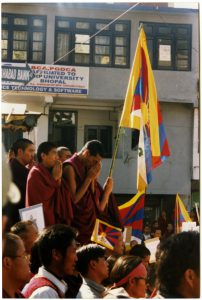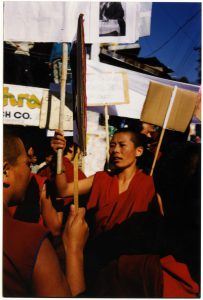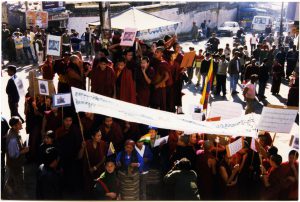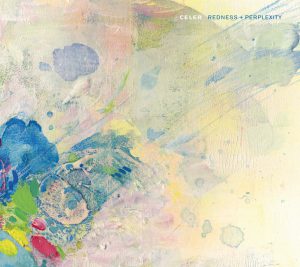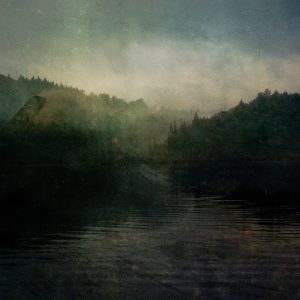While some on holiday are sucked into over-crowded commercial tourist traps, and others are off in their resorts or private villas, some of the most memorable places and experiences are the somewhat unusual, even off the beaten-path locales. Picture postcards often contain brief accounts or memories of travels to these places, being descriptive, cryptic or comical anecdotes of a given day’s events, compressed into a few short phrases—a substitute for longhand letters. They also serve to freeze a moment in time in a more permanent and retrospective fashion than the immediacy of a quick e-mail or photo sent via the internet. These moments in time are what the trilogy of releases by Celer (Will Long) and Machinefabriek (Rutger Zuydervelt) are like.
It started when they performed together in November, 2010 in Tokyo, Japan and then decided to collaborate remotely on a series of short releases beginning in October, 2011 between Tokyo and Rotterdam. The pieces started as larger works and eventually were edited into musical postcards, or drone poems* of sorts, evoking a place, event or state of mind. Artwork found by Long in Tokyo has been used for the covers of the 7 inch vinyl releases with design and graphic layout by Zuydervelt. As much as I appreciate the convenience of digital-format music, there is something quite special about the 7 inch record, packaged in artful sleeves of re-purposed postcard and souvenir images. Even better, each piece is accompanied (via download) by a beautiful and timeless video interpretation by multimedia artist Marco Douma.
The soon-to-be-released Hei/Sou is the last in this trilogy. Maastunnel/Mt. Mitake and Numa/Penarie were the first two releases. Digital files are also available and the vinyl pressings are limited to 250 copies each (Maastunnel/Mt. Mitake vinyl is now sold out).
Maastunnel/Mt. Mitake are readily identifiable places. Maastunnel is a tunnel in Rotterdam and this track has some mystery. The piece opens on the outside approach to the tunnel (with the ambient sounds of water). There is an apparent twist in the plot where voices can be heard, “I didn’t see his face…he might have been just anybody…just anybody.” Suddenly, a break to the interior where vehicles are passing over expansion joints creating pulses that resonate throughout the underground structure before a quick return to the roadway above-ground. Mt. Mitake is a contrast to the underworld. It starts with a sense of floating in the clouds. The second section creates a sense of tension with the calming effects of the first section in the background; kind of a panoramic view with scenes changing. The peaceful opening section returns to close the track.
Numa/Penarie are more obscure experiences. Numa is almost like a collection of sounds experienced throughout the day; clusters of lights buzzing, bell-like sounds, subways braking, jets taking off in the distance. The second section is more intense (again, a feeling of being underground), expansive and layered with lower frequencies underneath. The close brings a return of lighter and higher frequencies, returning somewhat to the opening themes. Penarie is somewhat perplexing; it’s dense, electric and unrestrained. It expands and contracts with clusters of tones. Then there is a pleasant interlude of Mellotron-like waves before mixing with the original themes and sounds, while being accompanied by a clock and then fading quickly, almost like a fleeting dream.
The forthcoming Hei/Sou is the more contemplative of the three releases, and the most abstract. Hei starts with a cymbal-like percussive and then drifts into a gentle sustained keyboard mantra with a wandering background of gentle buzzing and contrasting deep bell-like tones. The cymbals return and are combined with a placid cluster of sound. Sou opens with a Morse-code-like pulse and omnipresent warping tones that gradually combine with a fabric of lightly sequenced rhythms, and there they hang in suspension as the pulsing grows stronger and then fades. Gradually an undertow of deep liquid sound emerges to the foreground and the rhythms are overtaken and then disappear.
These self-released sound postcards are beautifully presented visions of places and experiences. Where will Celer and Machinefabriek be traveling to next?
Link
